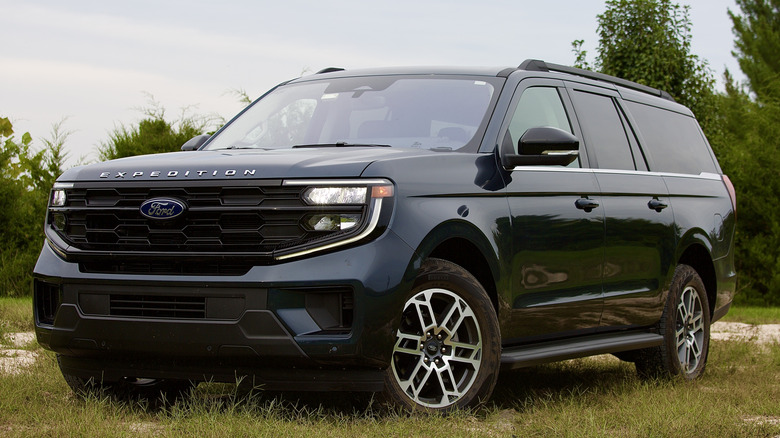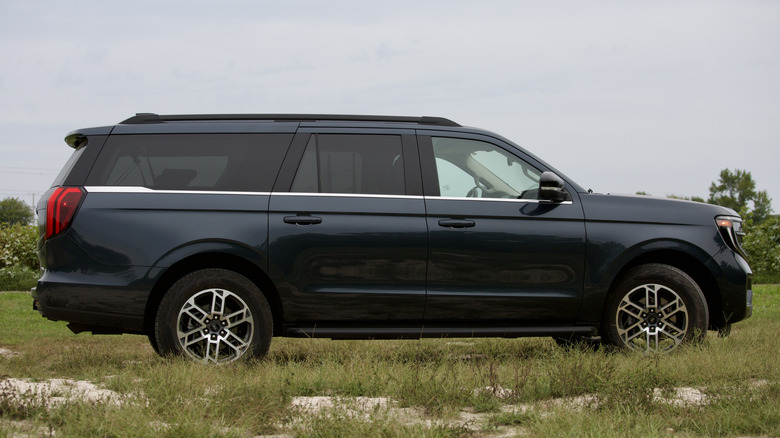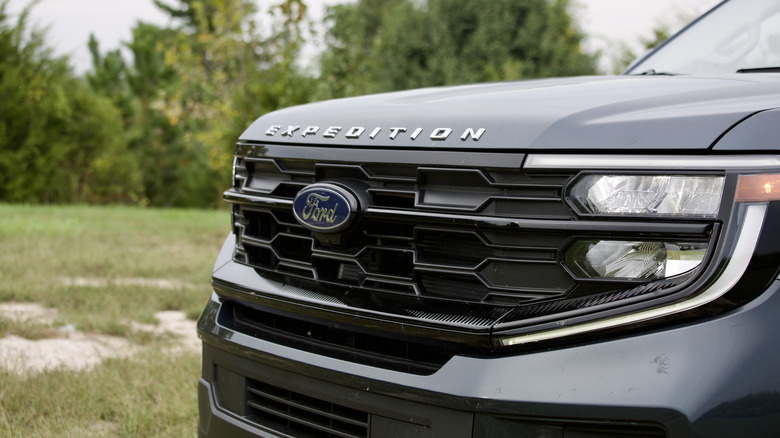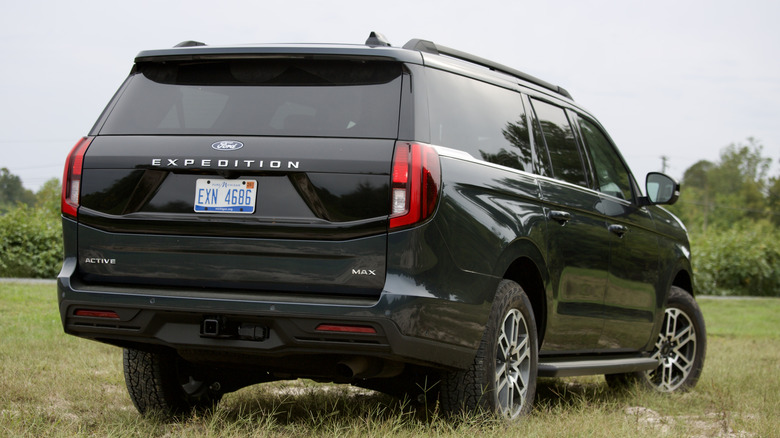Ford Needs Its Dinosaurs
Ford has some relative dinosaurs in its lineup, but in the age of hybrids, EVs, and increasingly connected vehicles — and yes, Ford also has all three — the presence of some Cretaceous-era vehicles is actually a good thing. There is currently no hybrid version of the Mustang; you can still buy a short cab, long bed, 5.0 V8-powered F-150 with only two-wheel drive. The Bronco and Ranger are decidedly old-tech 4x4s. Look, there's literally a Raptor in Ford's lineup.
That's not to say Ford refuses to innovate. All of those vehicles can be equipped with modern, turbocharged EcoBoost engines that make a ton of power without demanding vast displacement; all have Apple CarPlay (take that, General Motors); and often they can be equipped with Ford's driver assistance tech, BlueCruise, which allows hands-free driving on certain roads.
Ford has managed to do something a little rare in today's automotive landscape and, if we are going by sales numbers, it has worked really well. Ford is keeping its dinosaurs alive.
Prehistoric crowd pleasers
No vehicle exemplifies this ideal more than the current Ford Expedition, I'd argue, a vehicle I just got done spending a week with. I did not go to a former theme park near Costa Rica to get a taste of Ford's prehistoric crowd pleasers, I just drove around suburban Baltimore, but I think I got the idea. I was most curious to see how the huge three row SUV which handles itself so well in reviews was kept alive so successfully, when the future of hybrids and EVs is approaching faster than a meteor to the Yucatan peninsula 65 million years ago.
Turns out, the Expedition just works. Substantively, there is nothing wrong with the outsized family hauler (aside from 15 miles per gallon in the city) that should change how Ford makes and markets the overall vehicle. It's a stellar idea that's been around for decades, though has waned in recent years: a kinda-sorta truck-based SUV that can carry a lot of people/things, and which isn't a purpose-built luxury vehicle.
Really, only the Chevy Suburban and refreshed Nissan Armada carry on that lineage along with the Ford. And, given the fact that the Suburban has been around for almost a century and Ford's Q3 sales for 2025 recorded the best Expedition numbers in 20 years, it looks likely that the Suburban and Expedition's rivalry might go on for several more years.
Mainstays of the brand
The only major change to the Expedition's basic formula over the years has been the disappearance of a V8 engine. The sole engine choice is a 3.5-liter EcoBoost V6 these days, but, given the fact it makes 400 horsepower and can tow up to 9,600 pounds, I think it's fine to give up two cylinders (and gain two turbochargers). Feel free to send me an angry email if you disagree. I won't read it.
For a brief time, I worked at a Chevy dealership selling new and used cars. While I wasn't great at selling them, I gained a lot of insight in to how people buy cars, for good or ill. Although people who were upgrading from an ancient car were more likely to buy something a little wackier, like a Chevy Volt, the vast majority of customers I saw were buying a newer version of something they already had.
Equinox owners bought another Equinox, Tahoe owners bought another Tahoe. I think buyers are a little more conservative than we give them credit for. "Conservative" is not a pejorative, mind you: if you're going to spend all that money on a car, you probably want to make a safe choice. The Ford Expedition is a "safe" choice. It happens to also be a very good choice, but it's a safe one nonetheless. It's not going to throw you any curveballs.
Keep people happy
Ford's core lineup of immediately recognizable cars — like the Mustang, F-150, Expedition, and Explorer — still works, and manages to stay sufficiently fresh when brands like Kia, Toyota, and others gallop through wild changes to keep people happy. Those brands, obviously, manage to keep the lights on and maintain a customer base, but you could argue they do so at the risk of betraying any consistent identity.
Kia is undergoing a renaissance in car styling. Toyota brings out a new hybrid every few weeks. Ford, however, has remained largely the same since the launch of the Maverick and F-150 Lightning, and it hasn't stained the brand in any considerable fashion. People are still lining up to buy F-150s, Explorers, and Expeditions, all vehicles that are just old, in an ideological and technological sense.
The Expedition, in fact, reminds me of my dad's 1999 Chevy Tahoe. Like the Tahoe, the 2025 Expedition takes exactly no extra effort to drive despite its considerable heft and ample power available. It's also functionally big, and not just beefy for the sake of being beefy like the EV Hummer or something like a Mercedes G-Wagen. There's 123.1 cubic feet of cargo in the "MAX" version if you fold all the seats down, or roughly the size of a New York City studio apartment (only the Ford costs less).
If it ain't broke...
Then there's how the Expedition fits a weird niche in that, comparatively, it's not all that expensive when you look at all the numbers. The base model starts at $62,400: only the Suburban inches out a victory by a mere $400. Rivals like the Armada, despite being somewhat less expensive, just can't compare when it comes to carrying as much stuff (the Nissan tops out at 97.1 cubic feet, for example).
On the other end of the price spectrum, where big SUVs from Lexus, BMW, and Mercedes can easily start at over six-figures, the argument resolves itself. Unless your day job involves duffel bags full of cash, the average demographic in the market for an Expedition isn't the same as the buyer for a Lexus LX 700. On a side note, you could also buy a Lincoln Navigator if you want the best of both worlds, but that's a conversation for a different day.
The Expedition is the perfect example of the old adage "if it ain't broke, don't fix it." Ford isn't doing that as a stick in the mud of automotive progress (I'd argue the Ford Maverick is ample evidence to the contrary): it knows exactly what it's doing keeping the Expedition relevant. That means sticking with what works and doing away with what doesn't. And, to an extent, it's that approach which is keeping Ford alive.




